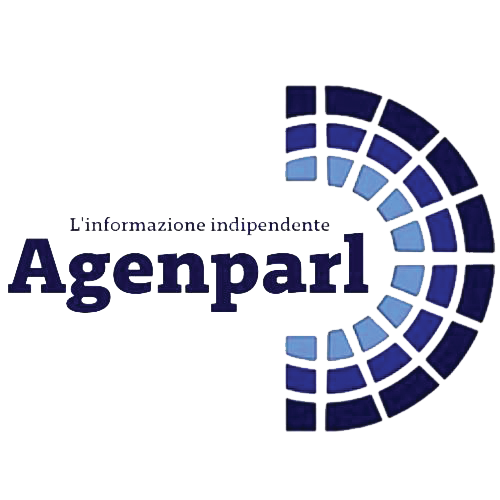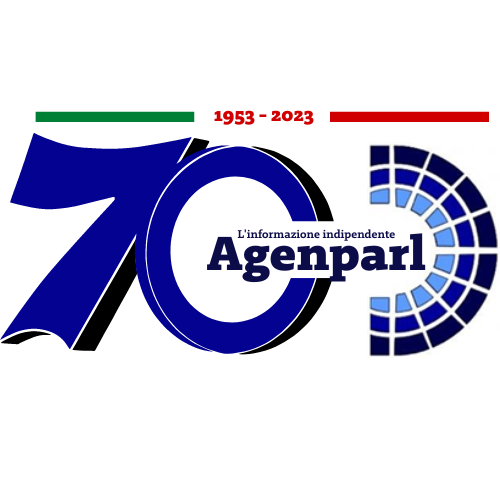 (AGENPARL) - Roma, 9 Agosto 2025
(AGENPARL) - Roma, 9 Agosto 2025(AGENPARL) – Fri 08 August 2025 A weekly compendium of media reports on science and technology achievements
at Lawrence Livermore National Laboratory. Though the Laboratory reviews
items for overall accuracy, the reporting organizations are responsible for
the content in the links below.
LLNL Report, Aug. 8, 2025
Researchers at LLNL have reached a milestone in combining AI with fusion
target design. (Graphic: Dan Herchek)
One hand-drawn diagram, thousands of simulations
LLNL touts AI agent to help with fusion target design
Lawrence Livermore National Laboratory (LLNL) has deployed what it bills as
the Multi‑Agent Design Assistant (MADA) to speed inertial confinement
fusion (ICF) target design. The system couples large language models with
LLNL’s 3D multiphysics code, MARBL. The goal? Automating the generation of
simulation decks.
Researchers run the agent framework on the El Capitan supercomputer, among
the world’s fastest at 2.79 exaFLOPs peak, and its smaller sibling
Tuolumne. The approach uses an “Inverse Design Agent” to translate
hand‑drawn capsule diagrams into thousands of simulations and a “Job
Management Agent” to schedule runs across the HPC systems.
The project is the result of years of development, with origins dating back
to 2019. In a recent demonstration, an open-source LLM fine-tuned on MARBL
documentation took a hand-drawn capsule diagram and natural language request
from a human designer, then produced a complete simulation deck and ran
thousands of simulations exploring variations in ICF capsule geometry.
Read More
LANL’s THOR target, featuring windows around the hohlraum’s equator.
(Credit: LANL)
LLNL and LANL create new window into fusion
https://interestingengineering.com/energy/us-nuclear-fusion-ignition-breakthrough
A research team led by Los Alamos National Laboratory (LANL), in
collaboration with Lawrence Livermore National Laboratory (LLNL), has
successfully achieved fusion ignition in an experiment that incorporated a
new diagnostic platform.
“This is a game-changing breakthrough that advances our fusion science and
3D modeling capabilities,” said Los Alamos physicist Joseph Smidt, the
co-director of the LANL inertial confinement fusion program.
The experiment, conducted on June 22 at the National Ignition Facility (NIF),
confirmed that ignition is attainable even when the system is modified to
allow X-rays to escape for measurement purposes. The test generated a fusion
energy yield of 2.4±0.09 megajoules and produced a self-sustaining feedback
loop known as a “burning plasma.”
The experiment was the first operational test of LANL’s Thinned Hohlraum
Optimization for Radflow (THOR) window system. This system is designed to
provide a source of high-flux X-rays for other scientific applications,
primarily for studying how materials respond to extreme radiation
environments.
Read More
https://interestingengineering.com/energy/us-nuclear-fusion-ignition-breakthrough
An artist rendering of two water droplets playing a game of tic-tac-toe.
(Image: EllaMaru Studio for LLNL)
Teaching droplets to play games
https://phys.org/news/2025-07-liquid-droplets-play-tic-tac.html
Artificial intelligence and high-performance computing are driving up the
demand for massive sources of energy. But neuromorphic computing, which aims
to mimic the structure and function of the human brain, could present a new
paradigm for energy-efficient computing.
To this end, researchers at Lawrence Livermore National Laboratory (LLNL)
created a droplet-based platform that uses ions to perform simple
neuromorphic computations. Using its ability to retain short-term memory, the
team trained the droplet system to recognize handwritten digits and play
tic-tac-toe. The work was published in Science Advances.
The authors were inspired by the human brain, which computes with ions
instead of electrons. Ions move through fluids, and moving them may require
less energy than moving electrons in solid-state devices.
“Think about what you had for breakfast,” said LLNL scientist and senior
author Aleksandr Noy. “It’s not a lot of energy, but you are able to do
pretty sophisticated computing and information processing tasks.”
Read More https://phys.org/news/2025-07-liquid-droplets-play-tic-tac.html
Researchers are using AI and machine learning to find potential treatments
for ALS. (Graphic: Lex Clarke-Steele)
Repurposed drugs could treat ALS
https://www.independentnews.com/news/livermore_news/livermore-lab-scientists-seek-potential-als-cure/article_a10ec71e-f7b9-41b3-ba59-4c9dbfdfc10a.html
Lawrence Livermore National Laboratory (LLNL) scientists are making progress
with high-performance computing machines, including the supercomputer
Tuolumne, and a tailored artificial intelligence (AI) algorithm to search for
drugs to treat amyotrophic lateral sclerosis (ALS), a debilitating
neurodegenerative disease.
The Lab’s ALS drug repurposing project began in 2021 and utilizes data
collected from medical records of individuals diagnosed with ALS. This
includes what other diseases they might have, what medications they are
taking and general information like their age and sex. One of the sources
that the Lab utilized was long-term electronic health record data from U.S.
veterans with ALS.
LLNL uses statistical machine learning and neural networks that collect
information on the medications these patients routinely take for medical
conditions other than ALS.
“While doing this project, we realized that we might be able to uncover new
ways of treating ALS by determining if people with ALS who received certain
drugs for other medical problems lived longer,” said Priyadip Ray, lead of
the ALS project and staff scientist at LLNL.
Read More
https://www.independentnews.com/news/livermore_news/livermore-lab-scientists-seek-potential-als-cure/article_a10ec71e-f7b9-41b3-ba59-4c9dbfdfc10a.html
The 3D quantum ghost imaging microscope setup. (Credit: Eshun et al.)
Ghost imaging enables spooky snapshots
https://www.azooptics.com/News.aspx?newsID=30438
In a recent study published in Optica, scientists at Lawrence Livermore
National Laboratory (LLNL) created a 3D quantum ghost imaging microscope, the
first of its type.
Until now, two dimensions or two planes at fixed z locations have been the
only options for quantum ghost imaging.
“This is a new way of 3D imaging that can do things with more sensitivity
and gather more information without having to scan a sample,” said Audrey
Eshun, author and scientist at LLNL.
The strategy relies on the quantum phenomena of entanglement. In contrast to
previous approaches, 3D quantum ghost imaging does not need to scan the
sample and may occur all at once. It employs extremely low light intensities,
making it suitable for imaging light-sensitive materials.
“This microscope is the first of its kind. There was another 3D quantum
ghost image, but in that case the resolution was about 3 cm. This is microns.
We are getting three spatial dimensions of information at the micron
scale,” said Ted Laurence, author and scientist at LLNL.
Read More https://www.azooptics.com/News.aspx?newsID=30438
——————————————————————————
Founded in 1952, Lawrence Livermore National Laboratory https://www.llnl.gov
provides solutions to our nation’s most important national security
challenges through innovative science, engineering and technology. Lawrence
Livermore National Laboratory is managed by Lawrence Livermore National
Security, LLC for the U.S. Department of Energy’s National Nuclear Security
Administration.
Read previous Lab Report articles online https://www.llnl.gov/news/lab-report
Unsubscribe from this newsletter
